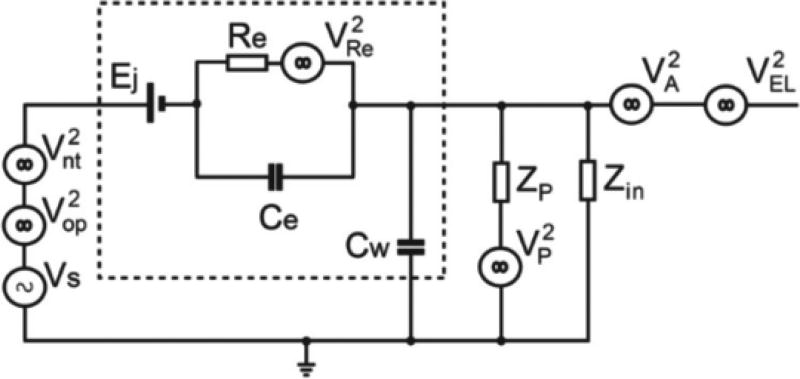Fig. 1.
The equivalent noise model of an electrophysiological recording amplifier optimized for using a high impedance metal electrode with small exposed tip. The noise model also includes additional noise sources which are associated with high current drivers used for optogenetic control. The dotted line surrounds the equivalent components of the metal electrode. Vs: extracellular action potentials of the measured neuron; : noise generated from the surrounding neurons; : small photoelectric current generated voltage during optical illumination of the metal electrode; Ej: DC half-cell potential; Re: leakage resistance of the electric double layer of the metal-electrolyte junction; Ce: equivalent capacitor for the electric double layer; : thermal noise of Re; Cw: insulating capacitor of the metal electrode; : power-line interference; Zp: equivalent insulating resistor between the powerline and the amplifier. Zin: input impedance of the amplifier; : intrinsic noise of the amplifier; : fluctuation noise during optogenetic current surge.

